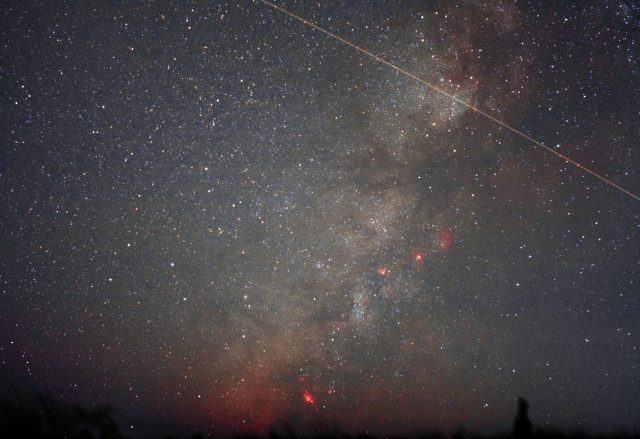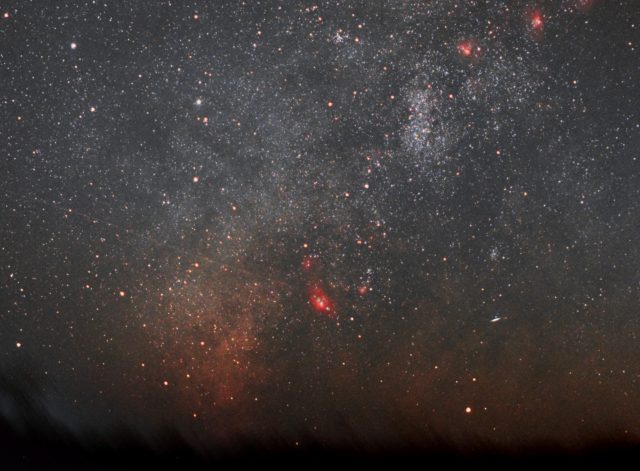
Instead of my usual dead-end road site, I drove a few more miles west of there to a new site I’ve been wanting to try out. It is only 50 minutes total trip time and you get a borderline Bortle 3/4 site with a really dark southern and southwestern horizon.

The west is pretty dark, too, but there are various small light domes from the west-northwest to the north. The northeast has a larger light dome from a metro area in that direction and the east has some smaller ones here and there. There is a line of trees from the southeast to the northeast which blocks the LP from those areas, which is good. But, it would not be the best place to shoot early morning comets, for instance, since you can’t see the eastern horizon very well because of those trees.

It is definitely dark there. Rated a 0.22 radiance level on a light pollution map. At one point, I might have glimpsed M33 naked eye, but I was not sure. If it would have been more towards the west I’m pretty sure I could have seen it. Moonrise was at midnight, so I quit early and did not get a chance to try for M33 when it was in that area of the sky. Maybe next time! 😉

